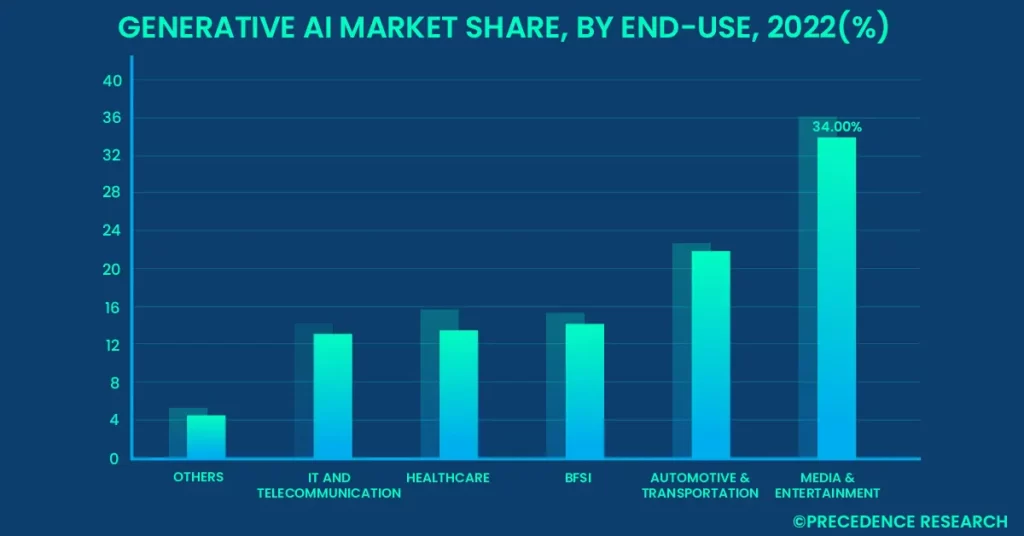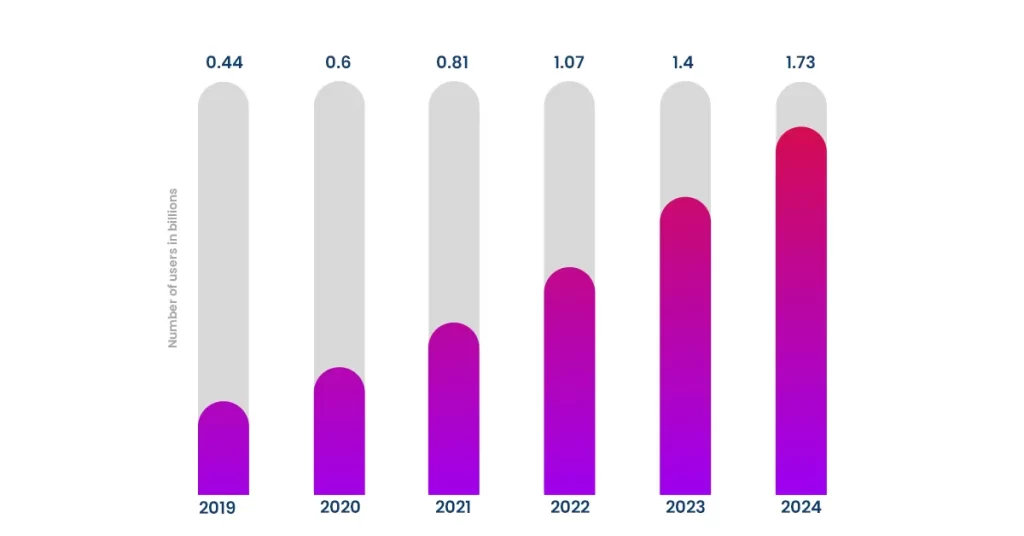Table of Contents
Cutting-Edge Tech Trends: Technological progress, particularly in the realm of artificial intelligence (AI), has had a profound impact on every facet of human intelligence life in recent years. The pace of technological advancement is predicted to stay strong as we approach 2024, providing the possibility of even more revolutionary solutions that will shape our future. Artificial intelligence (AI) is swiftly encroaching on many parts of contemporary life, from smart homes and virtual assistants to autonomous vehicles and innovative medical uses. In 2024, we should see major developments in 5G, edge computing, computational power, image generation and quantum computing.
The capacity to conduct complex calculations at unbelievable speeds is the promise of quantum computing. This has the potential to significantly impact fields such as cryptography, drug discovery, and optimization. The opposite is true with edge computing, which seeks to enhance processing capabilities at the network’s peripheral to provide faster response times for applications and services. By facilitating the smooth networking of devices, the widespread deployment of 5G networks will open up new possibilities and aid in the proliferation of the Internet of Things (IoT).
As we navigate the ever-evolving landscape of artificial intelligence and technology, it seems that 2024 will mark the start of a new age of possibilities, altering our perceptions and interactions with the environment.
5 cutting-edge tech trends to look for in 2024
- Generative AI
Generative AI is leading the charge in technological innovation, which is causing a sea shift in how computers understand and create content. Thanks to this cutting-edge science, computers can learn styles and patterns from the data they currently possess, enabling them to generate text and lifelike media such as images, videos, text, and music. The arts, content creation, and product design are just a few of the industries that we anticipate to see a significant surge in the use of generative ai systems in 2024.

Generative AI has found widespread usage in the creative sectors. Artists are using generative algorithms to produce fresh and captivating works of art. New kinds of creative expression have emerged, and new concerns about creativity have been raised, by generative adversarial networks ability to blend styles, stable diffusion, patterns, and even references to the past.
- Cybersecurity
With the ever-changing digital environment and interconnected networks, it is crucial to prioritize cybersecurity in today’s world. We need new technology and methods to safeguard critical infrastructure and data because cyber threats are always evolving. The prevalence and complexity of cyberattacks are on the rise, suggesting that 2024 will be a watershed year for cybersecurity.
- AI and ML
Artificial intelligence’s ability to find patterns in massive amounts of data enhances both threat detection and response. In light of the fact that quantum computers may be able to decipher current encryption methods, researchers are exploring cryptographic algorithms that are resistant to these machines as a means of future digital communication security. Quantum threats and solutions that are resistant to quantum computing will alter cybersecurity in the coming years.
Both user experiences are making inroads into mainstream tech, where they are enhancing the user experience, expanding their application beyond specialty areas. More natural interactions with devices and applications are becoming a reality because of advancements in computer vision and natural language processing. Virtual assistants powered by artificial intelligence are quickly becoming more useful for conversational interfaces that understand user preferences and context rather than just automating simple tasks.
- Quantum computing
Frontier technologies like quantum computing and communication networks may soon dominate the computer industry. As quantum technologies are researched and implemented, new challenges and fascinating opportunities like quantum systems, magnetic fields, quantum bits or qubits, quantum technology will emerge in the year 2024.
The exponentially faster calculation speeds offered by quantum computers as compared to classical computers have enormous potential applications in numerous fields, including cryptography, optimization problems, and materials research. The door is opening for the use of quantum machines, quantum physics, error correction in real-world applications as researchers work to construct more robust and scalable quantum computers.
A significant development in quantum mechanics is anticipated to occur in 2024 as a result of investigations into quantum communication networks. Quantum key distribution (QKD) systems use quantum mechanical ideas to encrypt data transfers; its feasibility is a topic of continuing study. Potentially ushering in a new era of secure, unbreakable encryption methods, quantum simulation communication has great promise. In light of the creating realistic increasing number of cyber dangers, these methods are essential.
- VR & AR
Thanks to leveraging technological, which are changing the way we engage with digital transformation initiatives, the line between the real and the immersion virtual reality, term virtual reality is blurring. A new era of spatial computing will have dawned by 2024 thanks to these immersive technologies, which will have transformed several industries, such as the entertainment industry, educational institutions, healthcare systems, and more.

The gaming and entertainment industries are being utterly transformed by virtual and augmented reality thanks to their revolutionary immersive experiences. Users may have a stronger sense of presence, being fully immersed in the virtual world, as virtual reality (VR) headsets, haptic feedback systems, and realistic images continue to advance. Augmented reality ar, virtual environment, on the other hand, involves superimposing digital business data on top of the actual world to create more interactive and exciting experiences. Among the many potential uses are interactive advertisements and educational aids that enhance the engagement of course content.
Augmented and virtual reality (AR/VR) technology is revolutionizing education. Students have access to new ways of learning via immersive educational materials, interactive simulations, and virtual field trips. Because of the spatial nature of cutting-edge tech trends like VR headsets and VR technologies, which enhances students’ learning and retention, these technologies are great tools for educators.
The healthcare business is also benefiting from the use of virtual and augmented reality within Cutting-Edge Tech Trends. New developments in healthcare technology have many positive effects, such as therapeutic interventions, improved visualization of medical images, and surgical training simulators, demonstrating the impactful integration of Cutting-Edge Tech Trends in healthcare advancements.
Most promising tech career trends in 2024
- Network/cloud architect
Network and cloud architects are becoming more important as a rising number of companies shift their infrastructures to the cloud. There will certainly be a significant need for professionals with expertise in cloud and network architecture who can design and implement systems that are reliable, safe, and extensible. The increasing popularity of cloud computing is predicted to drive need for architects that possess expertise in improving network performance, safeguarding data, and enabling seamless integration with cloud platforms.
- Data scientists
Data scientists are essential for making sense of enormous datasets, and big data isn’t going away. As more and more businesses seek to make data-driven decisions, the need for skilled data scientists is expected to increase in the realm of Cutting-Edge Tech Trends. Data scientists are responsible for comprehending and analyzing massive information, developing models to predict future results, and providing actionable recommendations. The merging of data science, AI, and ML further highlights the significance of this function in encouraging innovation.
- Software Engineer
Since software engineering is foundational to the technology industry, qualified software engineers are expected to be in high demand. By prioritizing scalability, efficiency, and security, software engineers create apps that power many industries. Because of their ability to promote technological innovation, software engineers who stay up-to-date with the latest frameworks, languages, and methodologies will be highly sought for.
- Devops Engineer
The ideas of DevOps, which this engineer stresses, are fundamental to modern software development. These approaches show how important it is for development and IT operations to work together and automate processes. On the one hand, DevOps engineers help optimize the software development lifecycle (SDLC), on the other hand, they increase system reliability and speed up delivery. As the DevOps trend is expected to gain momentum in 2024, engineers with a focus on DevOps will be vital in bridging the gap between operations and development teams.
- Senior Web Developer
Developers specializing in websites will always be in high demand so long as online communication and commerce are fundamental to modern life. Senior web developers are the greatest choice for building complex and sophisticated web applications due to their extensive knowledge and expertise in the sector. As web technologies, such web standards and progressive web apps, continue to expand, senior web developers will be essential in creating compelling and user-friendly online experiences.
How to start learning to make your career in IT future proof?
A sustainable IT career is the result of a well-planned combination of relevant job experience, certifications, and continuing education. If you want to ensure the continued employment of your IT position, adhere to the following guidelines:
1. Self-Evaluation and Goal-Setting
Determining which subfields within the enormous IT sector pique your attention is crucial for navigating the rapidly evolving landscape of Cutting-Edge Tech Trends. Whether it’s cloud computing, data science, networking, programming, or other areas, assessing your strengths and interests is the first step towards improvement.
Setting realistic, measurable, and achievable career goals in these Cutting-Edge Tech Trends is essential. Once you’ve completed some study, you’ll be better equipped to choose a job path that aligns with your interests and offers strong professional development potential. This approach ensures you stay relevant and competitive in the dynamic IT industry.
2. Figure Out What Classes to Take
Use a popular online learning platform (such as Coursera, edX, or Udacity) to find courses provided by reputable colleges and companies. Find a way to incorporate learning into your daily routine. Participate in online forums, groups, and resources to expand your horizons and network with other students and professionals.
3. Get Involved in Professional Networks
Participate in LinkedIn groups, attend local events, and join online forums to meet other professionals in your field. Find wise, experienced people to learn from and work with as mentors.
ALSO READ: A Comprehensive Look At The Growing Significance of Machine Learning
FAQs
-
In 2024, how do you think technology will change?
Generative AI models are revolutionizing content creation and will have a significant impact on the creative sectors and marketing, reflecting the ongoing evolution of Cutting-Edge Tech Trends. Concerns over copyright and appropriate technology usage will arise as a result of this transformation. Using AI-driven threat detection and encryption that is immune to quantum attacks will be essential in the fight against evolving cyber threats, highlighting the importance of staying ahead in Cutting-Edge Tech Trends. New encryption technology and international cooperation are required for effectively addressing these challenges in the realm of Cutting-Edge Tech Trends.
-
What are the most popular IT career paths?
The need for a network/cloud architect is growing as more companies shift their infrastructures to the cloud. These professionals are vital in developing safe and scalable solutions for these systems. Data scientists help with the growing need for data-driven decisions by delving into complex datasets, developing prediction models, and offering practical insights. The role of the software engineer is to create secure and efficient software solutions while also staying current with technological developments in order to adapt to a dynamic industry.




Leave a Reply